





Mace was an improved version of the Matador. Like its predecessor, the Matador, the Mace was a tactical surface-launched missile designed to destroy ground targets. It was first designed as the TM-76 and later the MGM-13. It was launched from a mobile trailer or from a bomb-proof shelter by a solid-fuel rocket booster which dropped away after launch; a J33 jet engine then powered the missile to the target.
The Goodyear Aircraft Corporation developed ATRAN (Automatic Terrain Recognition And Navigation), a radar map-matching system ) in which the return from a radar scanning antenna was matched with a series of "maps" carried on board the missile which corrected the flight path if it deviated from the film map. The company began lab tests in March 1948, flight tests in October of that year. Martin showed little initial interest, but problems with the Matador's guidance necessitated a change. In August 1952, Air Materiel Command initiated the mating of the Goodyear ATRAN with the Martin Matador. This mating resulted in a production contract in June 1954. ATRAN could not be easily jammed and was not range-limited by line-of sight, but its range was restricted by the availability of radar maps and missile range. Although in time it became possible to construct radar maps from topographical maps, ATRAN initially performed poorly.
USAF installed ATRAN in the TM-61B variant, nicknamed Mace. The missile differed from the "A" and "C" models in more ways than just designation and name. Mace had a longer fuselage, shorter wings, and more weight than the "A" and "C." The Mace also had more power, with its 5,200-pound-thrust J33-A-41 turbojet engine and a 97,000-pound-thrust booster. It first flew in 1956 and could reach Mach .7 to .85 over a 540-mile range at low level (as low as 750 feet), and 1,285 miles at high altitude. Because of these substantial differences of configuration and capability, the Air Force redesignated Mace TM-76A. But these improvements did not come cheaply; the TM-76A cost about $250,000, compared to $60,000 for the TM-61C.
The Air Force installed a a jam-proof inertial guidance system aboard the Mace "B" (designated TM-76B) which had a range exceeding 1,300 miles. To enhance mobility, Martin designed the Mace's wings to fold for transport (the Matador's wings were transported separately and then bolted on for flight).
USAF deployed the Mace in Europe in 1959, and it served alongside the Matador before the latter phased out in 1962. Six missile squadrons (comprising the 38th Tactical Missile Wing) served in Europe with just under 200 TM-61s and TM-76s. In Korea, the 58th Tactical Missile Group became combat ready with 60 TM- 61Cs in January 1959. It ceased operations in March 1962, only a few months after the 498th Tactical Missile Group in December 1961 took up positions in semi-hardened sites on Okinawa.
Development of the "B" missiles began in 1964 and remained operational in Europe and the Pacific. The two squadrons of TM-76B/MGM- 13C continued on active duty until December 1969.
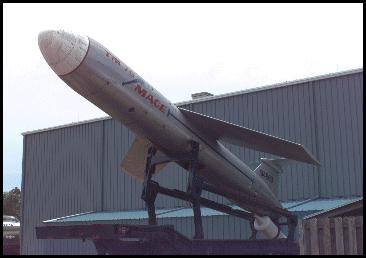
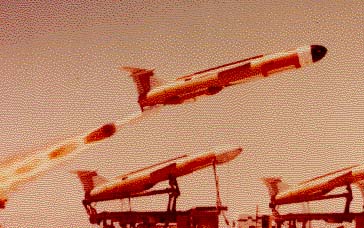
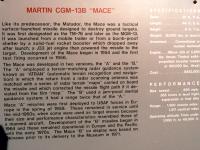
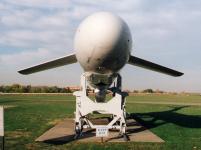
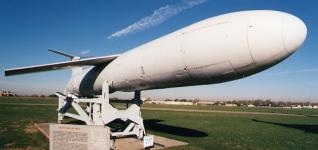

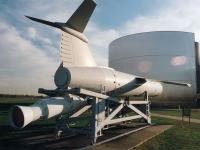
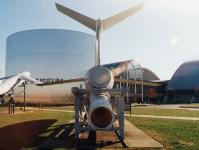
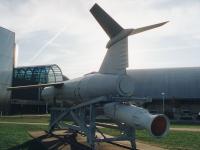
Specifications |
||
| Span | 22 feet, 11 inches | |
| Length | 44 feet, 6 inches | |
| Height | 9 feet, 7 inches | |
| Weight | 18,000 lbs. at launch | |
| Armament | Conventional or nuclear warhead | |
| Engine | Allison J33 with 5,200 lbs. of thrust and a Thiokol solid-propellant booster rocket with 100,000 lbs. of thrust | |
| Cost | $452,000 | |
| Maximum speed | 650 mph in level flight; supersonic in final dive | |
| Range | 1,400 miles | |
| Ceiling | 40,000 feet | |
